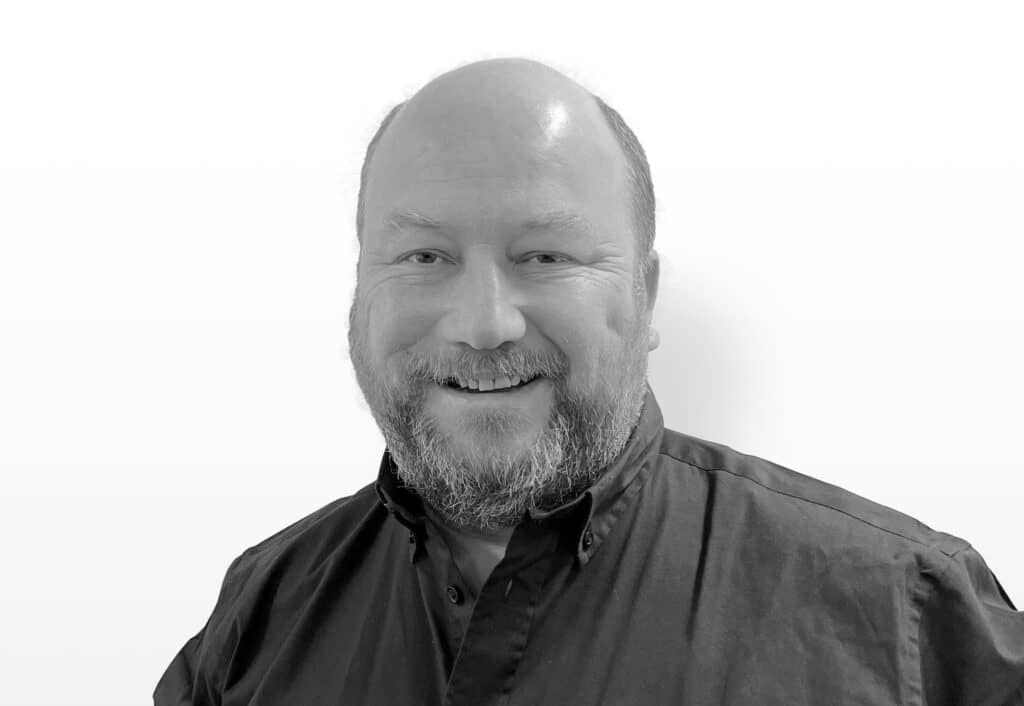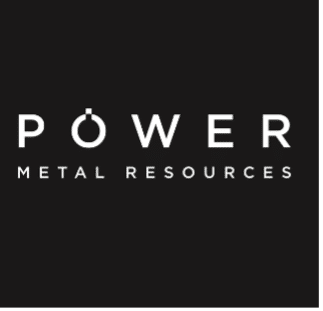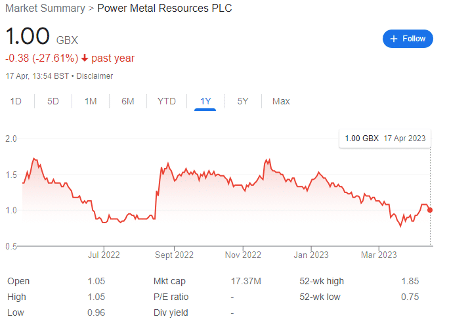Power Metal Resources is one of my top long-term FTSE AIM picks — primarily for its uranium portfolio in the Athabasca Basin.

Perhaps the most common question that I’m asked — both in person and online — is which hot AIM share will be the next PREM or KOD.
I rarely entertain these questions, as these companies were essentially diamonds in the rough, which would go on to secure huge gains once the market recognised the lithium supply gap and the significance of their lithium deposits. And so they did.
The problem is that there are few deeply undervalued FTSE AIM lithium explorers left on the market — there’s cases to be made for Atlantic, Zinnwald, Savannah Resources, and Bradda Head, but I like to think a couple of years ahead. Fundamentally, the market has already woken up to lithium’s potential.
Next up will be problems concerning ex-China graphite supply, which I have already covered extensively. Small-cap graphite will surge in demand — a prediction, not a certainty — and I’ve already considered key graphite stocks to watch, including TGR, BRES, GROC, and MARU (though this latter company is more of an all-rounder).
But thereafter, the supply shortage of uranium destined for nuclear power generation will take centre stage. To be clear — there exists a similar fundamental price disconnect between graphite and uranium’s market prices, and the anticipated global demand, that used to exist for lithium.

POW’s management team — like Neo’s Jason Brewer — don’t want to be too specific on where the uranium price may go. They believe that it is ‘dangerous’ to predict commodity prices, though note that the supply gap is very real, without even considering ‘projected new build of nuclear capacity, which makes the gap even wider.’
‘Positive price dynamics’ are in in place for uranium as governments ‘now increasingly recognize the need for nuclear to increase in the energy mix at the expense of fossil fuels if clean baseload energy is to be guaranteed.’
I’ve covered the promising Neo Energy Metals IPO here, as well as the prospects for titan producer Kazatomprom. But aside from these two, the key area where I think investors can find significant value is in small-cap uranium companies boasting exploratory projects in the Athabasca Basin in Canada.
Of course, some operators are better than others. I think Canada-listed F3 Uranium is one of the best choices if you accept the bull case — and Power Metal Resources (LON: POW), despite its smaller market cap — is another.
One important thing to note is that I do not trade exploratory shares on leverage, and fully expect these investments could take years to pay off. PREM and KOD saw huge volatility before really taking off, often with little rhyme or reason behind the day-to-day price movements.
I suspect that POW shares will experience similar volatility — this is a UK share to buy for the long-term investor with a multi-year time frame.
And to be clear, this is not investing advice.
Power Metal Resources: basic investment case
True to form, AIM never disappoints when it comes to volatility. POW shares are down 27% over the past year and 30% year-to-date, but up 20% over the past month to 1p per share.

Much of this share price movement is due to ever-changing sentiment over its other promising projects —with excellent coverage easily available elsewhere.
However, it’s the uranium portfolio which excites me — and I’d argue that even without POW’s other projects covering NINE other metals, the company is undervalued based on its uranium assets alone. I’d note that PREM’s RHA Tungsten and Otjozondu Manganese projects, alongside KOD’s sizeable gold portfolio are essentially irrelevant to the recent share price rises — all it takes is one catalyst in the portfolio to see a re-rate.
I can’t go into detail on POW’s other resources; rather, I’d simply note that the uranium portfolio looks most promising to me as the eventual flagship. And sporting a depressed share price, I feel that the FTSE AIM company presents a fair entry point for those with a long-term investing view.
Athabasca Potential
Power Metal boasts the largest Athabasca uranium portfolio in London, with the projects now ‘a key part of the Power Metal story going forward.’ Exploration in the region is starting this quarter, assuming nothing goes wrong (not uncommon at this stage).

Of course, exploration is not exactly cheap — though CEO Sean Wade recently noted that ‘investment in higher cost exploration programmes (is) largely paid for…alongside our cash we have already a multi-million-pound listed investment portfolio, much of which becomes tradable in July 2023…we are quite strong with regard to medium term capital, and we hope to add considerably to that with further disposals.’
When asked directly, management note that they are ‘considering various funding solutions for the exploration phase and certainly would not rule out a strategic joint venture.’ I’d argue that a JV would make the most sense given that other operators in the area have already invested sizeable capex, which would make sharing resources the most common-sense way forward.
It’s important for investors to realise that much like PREM and KOD, investing in this pre-exploration stage means accepting a higher level of risk in return for larger potential rewards. However, the Athabasca basin is a highly prospective region, including the Arrow, Triple R, and Hurricane deposits — making it a ‘great address’ for uranium.
While there can be no guarantee that POW’s projects will deliver substantial returns, the risk-reward trade-off is looking promising. Indeed, management think that there is ‘significant inherent value’ in the company and agree that now is an excellent entry point.
CEO Sean Wade and Exploration Manager Oliver Friesen note that Athabasca is based in ‘Saskatchewan (which) is ranked number 2 in the world for mining investment attractiveness from the Fraser Institute.’
It’s a ‘very well-established uranium exploration and mining district, there are several very high grade and large scale uranium mines located within the Athabasca and the infrastructure for mining and uranium mining specifically is improving every year.’
Next steps
While POW won’t name a specific property that they consider to be most promising, it has claimed that the Tait Hill property ‘hosts a geological setting analogous to the Rössing uranium mine.’ Indeed, management consider that ‘there is a significant re-rate that will be happening for properties like Tait Hill and most importantly for companies that have uranium portfolios.’
Again, this is a function of the depressed uranium market — but one where ‘all the signs are pointing towards what will be a very healthy, sustained, and exciting uranium bull market where a lot of these exciting projects and companies will experience significant re-rates.’
For perspective, the uranium portfolio is now ‘central to the Power model for the foreseeable future.’
Investors considering an investment should go in with eyes open; this is a capable team with a highly prospective and large uranium portfolio in an excellent location, surrounded by quality infrastructure and plenty of other companies who would likely be happy to enter a JV upon a sniff of a decent initial feasibility study.
But for balance, this is not a risk-free investment, and in my view is best included within a uranium portfolio including other companies operating in the Athabasca including F3.
But of course, higher risks mean larger rewards for those with the correct risk appetite.
This article — including question responses — has been prepared for information purposes only by Charles Archer. It does not constitute advice, and no party accepts any liability for either accuracy or for investing decisions made using the information provided.
Further, it is not intended for distribution to, or use by, any person in any country or jurisdiction where such distribution or use would be contrary to local law or regulation.
Brief Q&A with CEO Sean Wade & Exploration Manager Oliver Friesen
1. Where do you see the uranium price going after years of underinvestment in the sector? Will nuclear energy as a share of global power generation increase over the next decade?
I tend to think it is dangerous to try to predict commodity prices, given the huge number of variables involved, but it is certainly true that a significant gap exists between demand as it currently exists, and available supply. This does not consider projected new build of nuclear capacity, which makes the gap even wider. On that basis, it is very fair to assume significantly positive price dynamics for uranium going forward. Governments around the world now increasingly recognize the need for nuclear power to increase in the energy mix at the expense of fossil fuels if clean baseload energy is to be guaranteed. As such, nuclear’s share of global power generation is set to increase significantly.
2. POW has projects around the world, but its uranium portfolio is in Northern Saskatchewan, Canada. What are the advantages/drawbacks of this location, including regulatory reliability and infrastructure?
Saskatchewan is ranked number 2 in the world for mining investment attractiveness from the Fraser Institute. This ranking considers everything when it comes to regulations surrounding mining. The other important thing to note is that Saskatchewan is a very well-established uranium exploration and mining district, there are several very high-grade and large scale uranium mines located within the Athabasca and the infrastructure for mining and uranium mining specifically is improving every year as companies continue to make additional discoveries and put those discoveries into production. It’s a great place to work, a great place to explore and a very established and pro mining jurisdiction.
3. Given POW’s massive portfolio, is this new uranium project a current priority?
We have been very clear with investors that our uranium portfolio is a key part of the Power Metal story going forward and we expect to add to it over time.
4. Of the 16 Athabasca Uranium properties, which is the most promising — or if this is too hard to answer — which will likely be developed first?
That certainly is a tough one to answer. Every project we own in Saskatchewan has its own exciting geological merits and offers the chance of making a significant discovery which would be transformative for our shareholders. The important thing to note is that investors in Power get exposure to this wide array of opportunities, from our Tait Hill Project which possesses similarities to the world class Rössing Uranium Mine in Namibia, to our Badger Lake/West & East Hawkrock or Durrant Lake Projects located within the Athabasca Basin which have exciting conductors that are begging to be drilled – and everything in between. It is an incredibly diverse and expansive portfolio.
5. I specialise in FTSE AIM miners with quality assets that have been unfairly oversold. Given POW’s share price performance, would it be fair to say that now is an excellent entry point for would-be investors?
I think that is right. I have been very clear that I see significant inherent value in the portfolio, and it is my intention to get that unlocked for shareholders.
6. What makes these Canada-based Uranium Projects so appealing? How do they compare to alternative assets held by other companies?
The Athabasca Basin and its surrounding area is well known as a world-class address for uranium. In addition to the area being highly prospective, Canada and Saskatchewan in particular remain one of the safest and most reliable mining jurisdictions in the world.
7. POW claims that hyperspectral analysis on the Tait Hill property ‘hosts a geological setting analogous to the Rössing uranium mine.’ This is one of the most important uranium operations in the world — why the value disconnect?
One could argue that all uranium exploration & mining companies aren’t being fairly valued right now. The reality is that uranium is moderately out of favour but the important thing to remember is that when uranium moves into favour, it moves very quickly. It is imperative to get positioned before this re-rate happens.
So, this means that our expansive portfolio (including Tait Hill which is a very exciting asset in its own right) is not being fairly valued by the market. The important thing is that all the signs are pointing towards what will be a very healthy, sustained, and exciting uranium bull market where a lot of these exciting projects and companies will experience significant re-rates. We are happy to continue accumulating assets at cheap valuations in the meantime.
8. POW owns 100% of its uranium properties — given that development is likely to be expensive, do you think a JV with an established blue-chip miner will be needed, or do you plan to finance further exploration and development in an alternate way?
We are considering various funding solutions for the exploration phase and certainly would not rule out a strategic joint venture. We also have an in-house team of geologists with extensive experience and technical expertise specifically within Northern Saskatchewan. This ensures that we can be ultra efficient with how we deploy our capital across this exciting portfolio.
9. POW owns a 28% interest in FCM which launched its IPO as a spin-off from POW. I’ve recently had the pleasure of interviewing Chair James Knowles — do you foresee a possibility where the uranium portfolio is similarly spun-off to realise value?
Not in the immediate term. I see the uranium portfolio as central to the Power model for the foreseeable future. That said, we will always consider options that create the most value for shareholders.
